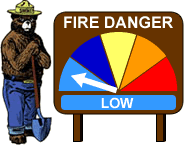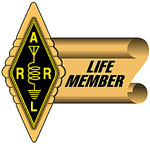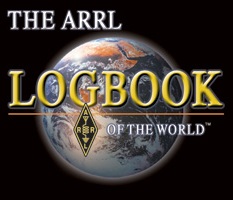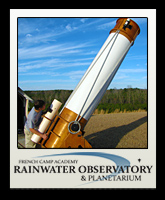DMR (Digital Mobile Radio)
Digital mobile radio (DMR) is a limited open digital mobile radio standard defined in the European Telecommunications Standards Institute (ETSI) Standard and used in commercial products around the world. DMR, along with P25 phase II and NXDN are the main competitor technologies in achieving 6.25 kHz equivalent bandwidth using the proprietary AMBE+2 vocoder. DMR and P25 II both use two-slot TDMA in a 12.5 kHz channel, while NXDN uses discrete 6.25 kHz channels using frequency division and TETRA uses a four-slot TDMA in a 25 kHz channel.
DMR was designed with three tiers. DMR tiers I and II (conventional) were first published in 2005, and DMR III (Trunked version) was published in 2012, with manufacturers producing products within a few years of each publication.
The primary goal of the standard is to specify a digital system with low complexity, low cost and interoperability across brands, so radio communications purchasers are not locked into a proprietary solution. In practice, given the current limited scope of the DMR standard, many vendors have introduced proprietary features that make their product offerings non-interoperable with other brands.
Specifications:
The DMR standard operates within the existing 12.5 kHz channel spacing used in land mobile frequency bands globally, but achieves two voice channels through two-slot TDMA technology built around a 30 ms structure. The modulation is 4-state FSK, which creates four possible symbols over the air at a rate of 4,800 symbols/s, corresponding to 9,600 bit/s. After overhead, forward error correction, and splitting into two channels, there is 2,450 bit/s left for a single voice channel using DMR, compared to 4,400 bit/s using P25 and 64,000 bit/s with traditional telephone circuits.
The standards are still (as of late 2015) under development with revisions being made regularly as more systems are deployed and improvements are discovered.[2] It is very likely that further refinements will be made to the standard, which will necessitate firmware upgrades to terminals and infrastructure in the future to take advantage of these new improvements, with potential incompatibility issues arising if this is not done.
DMR covers the RF range 30 MHz to 1 GHz.
There are DMR implementations, (as of early 2016), that operate as low as 66 MHz (within the European Union, in 'Lo-Band VHF' 66–88 MHz.)[citation needed]
The DMR Association and manufacturers often claim that DMR has superior coverage performance to analogue FM. Forward error correction can achieve a higher quality of voice when the receive signal is still relatively high. In practice, however, digital modulation protocols are much more susceptible to multipath interference and fail to provide service in areas where analogue FM would otherwise provide degraded but audible voice service. At a higher quality of voice, DMR outperforms analogue FM by about 11 dB. But at a lower quality of voice, analogue FM outperforms DMR by about 5 dB.
Where digital signal processing has been used to enhance the analogue FM audio quality then analogue FM generally outperforms DMR in all situations, with a typical 2–3 dB improvement for "high quality" voice and around 5 dB improvement for "lower quality" voice. Where digital signal processing is used to enhance analog FM audio, the overall "delivered audio quality" is also considerably better than DMR. However DSP processing of analog FM audio does not remove the 12.5 kHz requirement so DMR is still more spectrally efficient.
DMR Tiers
DMR Tier I
DMR Tier I products are for licence-free use in the European PMR446 band. Tier I products are specified for non-infrastructure use only (meaning without the use of repeaters). This part of the standard provides for consumer applications and low-power commercial applications, using a maximum of 0.5 watt RF power.
Note that a licence free allocation is not present at this frequency outside of Europe, which means that PMR446 radios including DMR Tier I radios can only be used legally in other countries once an appropriate radio licence is obtained by the operator.
Some DMR radios sold by Chinese manufacturers, most notably Baofeng, have been mis-labelled as DMR Tier I. A DMR Tier I radio would only use the PMR446 licence free frequencies, and would have a maximum transmitted power of 0.5 W as required by law for all PMR446 radios.
Although the DMR standard allows Tier I DMR radios to use continuous transmission mode, all known Tier I radios currently use TDMA, the same as Tier II. This is probably due to the battery savings that come with transmitting only half the time instead of continuously.
DMR Tier II
DMR Tier II covers licensed conventional radio systems, mobiles and hand portables operating in PMR frequency bands from 66–960 MHz. The ETSI DMR Tier II standard is targeted at those users who need spectral efficiency, advanced voice features and integrated IP data services in licensed bands for high-power communications. A number of manufacturers have DMR Tier II compliant products on the market. ETSI DMR specifies two slot TDMA in 12.5 kHz channels for Tier II and III.
DMR Tier III
DMR Tier III covers trunking operation in frequency bands 66–960 MHz. Tier III supports voice and short messaging handling similar to TETRA with built-in 128 character status messaging and short messaging with up to 288 bits of data in a variety of formats. It also supports packet data service in a variety of formats, including support for IPv4 and IPv6. Tier III compliant products were launched in 2012.
Amateur Radio Use
DMR has seen some use on the Amateur Radio VHF and UHF bands, started by DMR-MARC (Motorola Amateur Radio Club) around 2010. In Amateur spaces, Coordinated DMR Identification Numbers are assigned and managed by RadioID, Inc. Their coordinated database can be uploaded to DMR Radios in order to display the name, call sign, and location of other operators. Internet-linked systems such as the DMR-MARC, Phoenix UK DMR Network, BrandMeister network, TGIF, DV Scotland (UK), FreeDMR and several others (including several closed clusters), allow users to communicate with other users around the world via connected repeaters, or DMR "Hotspots" often based on the Raspberry Pi single-board computer. There are currently more than 4,000 repeaters and 15,000 "hotspots" linked to the BrandMeister system worldwide. The low-cost and increasing availability of internet-linked systems have led to a rise in DMR use on the Amateur Radio bands. The development of Raspberry Pi hotspots has allowed users to connect to single or multiple networks (using Pi-Star software). Pi-Star software used for many Raspberry Pi hotspots has also allowed those wanting to host an Amateur Radio repeater, do make a "home-brew" repeater using various radios controlled by a Raspberry Pi utilising the Pi-Star software, at a fraction of the cost of a commercial repeater.
DMR Radios for Amateur Radio Use
There has been a proliferation of DMR Radio Manufacturers that hit the market for Amateur Radio use. Most of these are from China and vary in quality and features. Early models were single-band radios, usually on the 70cm band. As the market matured the manufactures started adding 2 meter to their radios and other features like Bluetooth that allows integration with headsets and in-car systems. GPS was introduced, which opened the door for Digital APRS for transmit only and later added Analog APRS for transmit only. As of Spring 2021 there are models being introduced that have APRS receive.
Some of the manufacturers of DMR Radios, both hand held and mobile radios are Ailunce, Alinco, AnyTone, Baofeng, BTECH, Radioddity, Retevis, and TYT. There are a good number of dealers that are selling DMR Radios, also. Of course Amazon sells them, along with eBay. But there is no service or support when you buy from them. The standard Amateur Radio Dealers also sell them and have a varying range of technical support. Other dealers have built their business around DMR and provide exceptional support and training. Prices for DMR hand held radios vary from under $100 to over $300. You will also see re-purposed Motorola commercial radios used on the Amateur bands, also.
There are not a large number of DMR repeaters across North America, but the number keeps growing each day, as do users. Most DMR Radios will hold 200,000 contacts and not too long ago that seemed like a far off dream. But as of the 3rd week of May in 2021 there are over 196,000 users in the Contacts database. This number is growing at a rate of over 4,000 users a month. Most users as of this time are using Hotspots to access other DMR users in the many Talk Groups. There are a lot of people selling Hotspots, with a lot of them being based on the Raspberry Pi with a RF tophat. The MMDVM based Hotspots that use the Pi-Star Public Domain Software are vary popular. I use a ZUMspot HotSpot which has a Raspberry Pi 3B+ and a ZUMspot RF Hat. There are also proprietary Hotspots like the RFinder and the Shark OpenSPOT. Most Digital Hotspots will work with multiple Digital Radio modes like C4FM (YSF), D-Star, P25, NXDN, and DMR. Some Hotspots allow you to talk cross-mode like using your DMR Radio to talk to someone in a YSF Digital Room. There are both Simplex and Duplex HotSpots.
Creating a Code Plug for a DMR Radio can be intimidating, especially for people that are not savvy with networking. DMR uses a lot of databases, but it only needs a few to setup a fundamental Code Plug. The first thing you need is a DMR Radio ID number. You can go to RadioID.net to register for a DMR Radio ID. The databases in DMR are:
- Channel
- Radio ID List
- Zone
- Scan List
- Analog Address Book
- Talk Groups
- Digital Contact List
- Prefabricated SMS
- FM
- Receive Group Call List
- 5Tone Encode
- 2Tone Encode
- DTMF Encode
- HotKey_QuickCall
- HotKey_State
- HotKey_HotKey
- Auto Repeater Offset Frequencies
- Roaming Channel
- Roaming Zone
- APRS
But you only need 5 of these to have a totally functioning Code Plug. These databases do vary from by radio manufacturer, though. These are the 5 that you need to setup and this is also the order you must create them. There are some data elements that must be created after you set up other databases, but most of these are optional. Here is the order of the minimal Code Plug databases that must be created:
- DMR Radio ID (Just one is needed from RadioID.net)
- Talk Groups (You can download all of them)
- Channels (Analog and Digital Repeaters, Talk Groups, Simplex, etc.)
- Zones (Channels must be included in Zones to show up on the radio. A Zone is a group of related Channels.)
- Digital Contact List (You can download from various sources)
It all sounds very complicated, but after you get your head wrapped around what each database is used for and how they interact, it really makes a lot of sense. I have really enjoyed the quality of DMR signals and it is fun to sit in your recliner and talk to someone on the other side of the world with your hand held radio!

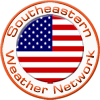
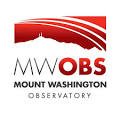
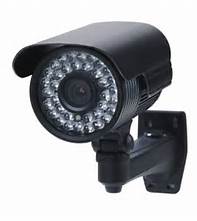 Mt Washington Wx CAM
Mt Washington Wx CAM
